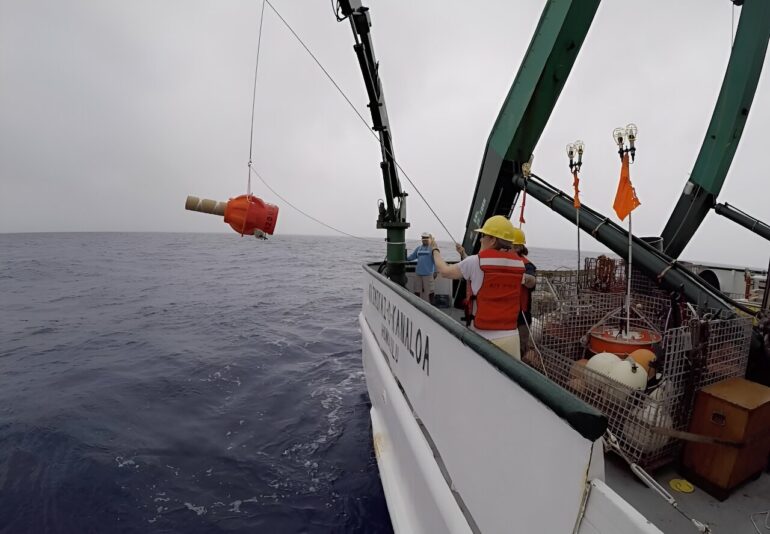New research published Sept. 19 in Geophysical Research Letters shows that using data collected by deep ocean robots, called Deep Argo floats, combined with historical data from research vessels has increased confidence that parts of the global deep ocean are warming at a rate of .0036 to .0072°F (.002 to .004°C) each year.
“Ocean warming is the dominant element of global warming and a major driver of climate change,” said Greg Johnson, an oceanographer at NOAA’s Pacific Marine Environmental Lab and lead author of the study.
“This study confirms the previously reported deep ocean warming, and reduces the uncertainties about the global ocean heat uptake in waters below 1.2 miles (2,000 meters), a key area of the ocean for predicting sea level rise and extreme weather.”
The new research also provides more detailed information about the geographic patterns of the deep ocean warming, which can help scientists better understand changes in the global ocean conveyor belt called the global meridional overturning circulation, also key to predicting weather and climate changes.
The research shows that the deepest ocean waters off Antarctica are a hot spot for warming. These bottom waters carry the warming north, traveling along the ocean conveyor belt. Another hot spot of warming is in the deep ocean waters off Greenland, which no longer receive large amounts of sinking cold waters from the ocean surface due to increased atmospheric warming and freshening of those surface waters from ice melt.
More detailed information about deep ocean warming can help improve climate models used to prepare society for future changes in ocean and air temperatures that drive sea level increases, precipitation, tropical cyclone frequency and intensity, and their impacts on humans and the environment.
Johnson said that scientists first began seeing this deep ocean warming trend off Antarctica without the benefit of Deep Argo data some two decades ago. But the size of the warming trend was quite uncertain because of the sparse measurements available previously. The new data from Deep Argo have helped to reduce the uncertainty in the size of the trend by a factor of two.
NOAA’s partners in the Argo Program first launched Deep Argo floats that could measure ocean temperature, salinity and other data down to a depth of 3.7 miles (6,000 meters) in 2014 in the Southwest Pacific off New Zealand.
Since that time, arrays of Deep Argo floats to measure deep ocean changes have been expanded in the Southwest Pacific and added in the South Atlantic off Brazil and Argentina, the South Indian Ocean between Australia and Antarctica, and the North Atlantic between Florida and North Africa.
“Right now, Deep Argo consists of pilot arrays in key regions,” said Johnson. “If we can build a global array we’ll be able to quantify the warming rate over shorter periods of time to see how that rate is changing.
“We have hints that the rate is changing but we need to be able to tease that out better. Measuring evolving temperature salinity patterns in the deep ocean will also aid in predicting climate changes decades in advance.”
Deep Argo is part of the overall Argo program, which is supported by NOAA’s Global Ocean Monitoring and Observing Program. Since its inception in 1999, the Argo Program has revolutionized our ability to track changes in the ocean with a global array of autonomous profiling floats, providing nearly four times the ocean information as all other observing tools combined.
More information:
Gregory C. Johnson et al, Refined Estimates of Global Ocean Deep and Abyssal Decadal Warming Trends, Geophysical Research Letters (2024). DOI: 10.1029/2024GL111229
Citation:
Data from robots show steady increase in deep-ocean warming (2024, September 23)



